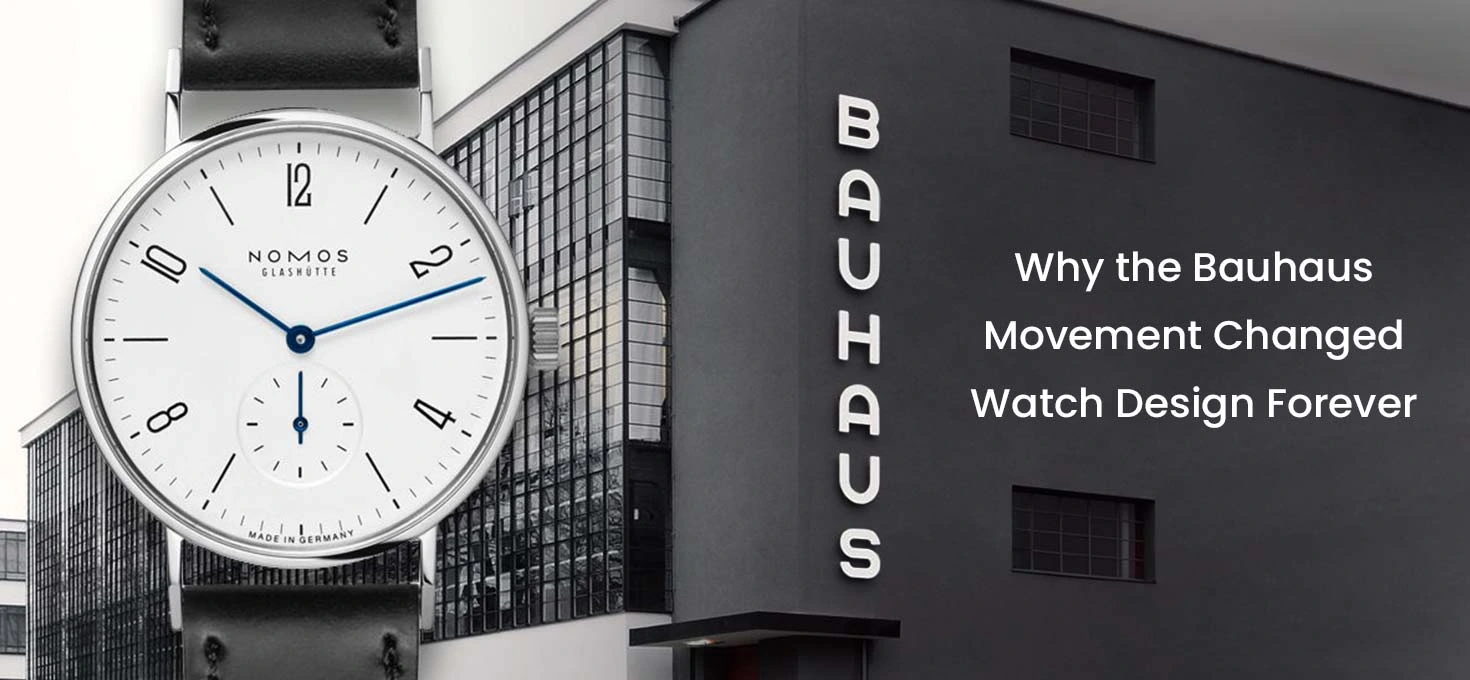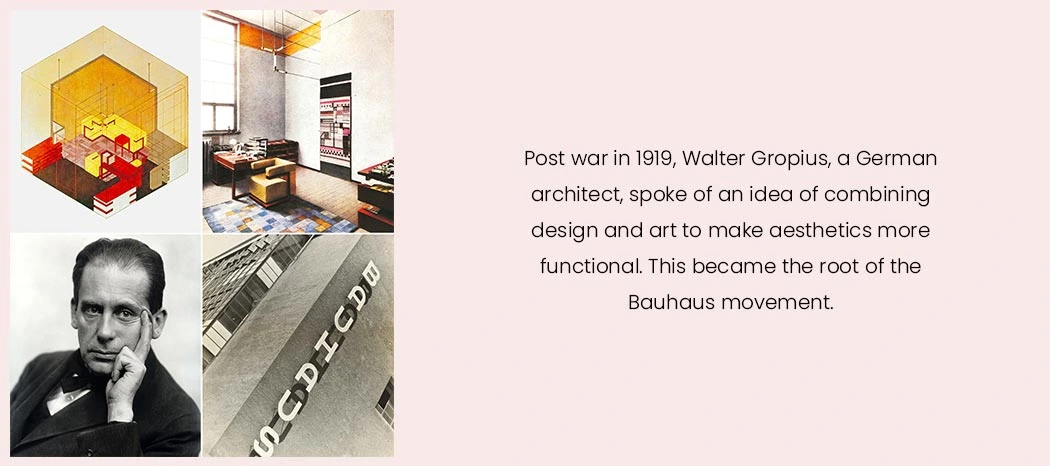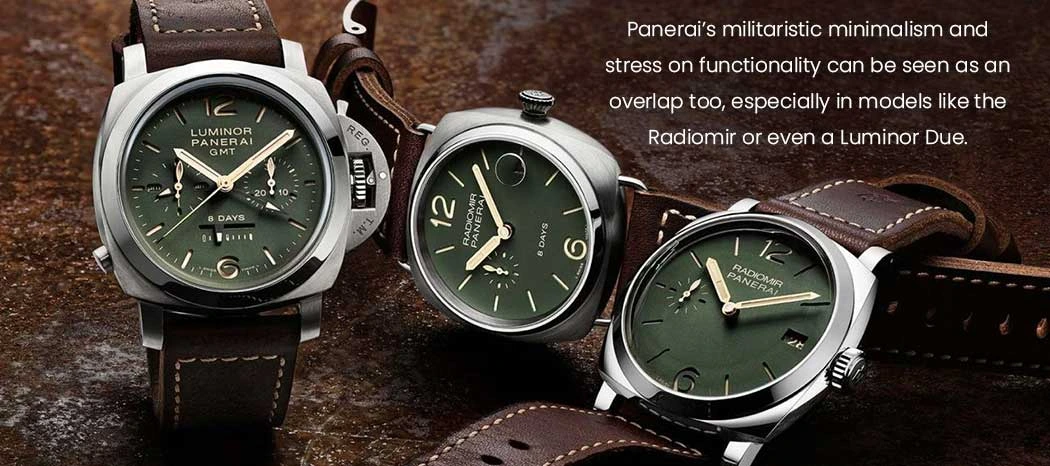Reading Time: 6 minutesA History of Time There will always be moments in time that, well, define time. These moments are as important as any other in history when things took a drastic pivot, and the past and the future could only be seen as different entities that […] The post Why the Bauhaus Movement Changed Watch Design Forever appeared first on Kapoor Watch Co. | Blogs.
 Reading Time: 6 minutes
Reading Time: 6 minutes
A History of Time
There will always be moments in time that, well, define time. These moments are as important as any other in history when things took a drastic pivot, and the past and the future could only be seen as different entities that converged in that moment. Some of these aren’t exactly documented – the first person to suggest the idea of timekeeping, the very first sundial, even the first person to think up a rudimentary clock – but, more recently, like in the last few hundred years, we have kept quite precise records of how and when everything happened – the first wrist watch, the first tourbillon, and so on, right up till the first quartz, integrated bracelets, and shortly after, smartwatches show up.

Among these many moments, one very poignant yet often overlooked moment is when the watchmaking world was influenced by the Bauhaus movement.

It happened circa 1919, right after the War to End all Wars had ended. The timing had everything to do with it. And this movement which was originally conceived as a manifesto to give art a new interpretation (and function). Over time, its influence extended and spilled generously into all fields of artistic application, including watchmaking.
The Bauhaus Basics

Before we proceed, it might be a good idea to quickly sum up what exactly made up the Bauhaus (pronounced ‘Bao-Haos’) movement and how would we recognise it if it were to turn up at our doorstep one day. Well, the year is 1919, the war has just ended. The world is waking up to a wounded reality, trying to take stock of the damage and working ways to rebuild society. Buildings, systems, processes…the revival would have to be quick and efficient, functional than merely aesthetically pleasing. Resources were limited and demands were high.
Walter Gropius, a German architect, presented his vision on the future of design – he spoke of an idea of combining design and art to make aesthetics more functional. He wanted people to use their skills to create things which were not just pleasing to look at but also served a purpose which was more essential than extraneous.
Given the harsh times, the severe lack of means, one can see why this idea would dawn upon someone. It was an effort to make the most of everything, to add functionality without compromising form. Sadly, I don’t think anybody in our PWD department thinks like that when redesigning and installing anything from public amenities like street lights and park benches to official buildings and communal areas.
Show Me Bauhaus
A good example from the early times of this movement is the Wassily Chair by Marcel Breuer who, in 1925, made a chair using tubular steel frames, the kind one finds on bicycles, and joined them using leather straps. It was so rudimentary a design and largely relied on repurposed materials which could be salvaged from items which were broken or beyond repair in their original form and usage. This chair almost came to define how furniture would be seen (and designed and experienced) forever. Many years later, when Charles and Ray Eames added their iconic, eponymous (Eames) chair design to the history books, it was, in many ways, still drawing huge chunks of inspiration from this Bauhaus design – using unconventional materials (moulded plywood instead of bicycle tubes), simple and functional to look at and easy to replicate at an industrial scale.
Another noteworthy example is the Wagenfield lamp, so starkly simple that one would think there was no design involved at all! One would have to take a step back and see the ornate chandeliers which had preceded this creation to understand just how much of a (controversial) contrast this might have been when it was first presented.
But beyond lamps and chairs, from buildings to children’s toys, paintings to sculpture, almost everything was touched by the power and lure of this movement. And among this, watches, an object which combined an exigence for form and functionality like few other consumer wearables ever would.
Watchmaking & Bauhaus
Almost as soon as the movement started taking root in the early 1920s, the watchmaking world had begun shifting under its influence. Remember, at this time, it was still not uncommon to source different parts of a watch from different suppliers, people who were specialised with a defined skill set and continued to hone it generation after generation, like a familial legacy (and possibly, a trade secret). Dial-makers, case-forgers, the people making the hands, or the straps, or those adding the flourishes to the parts of the movement, almost all of them started leaning into the Bauhaus movement.

At first, it was noticeable only slightly – cleaner dials, less ornate cases and movements, simplistic presentations – but when put together, it created a wrist-piece which looked very different from all that had come before. Earlier watches were ornate, more baroque touches defined their appearance. It was, after all, something that only a select privileged few could afford so all time and effort went into making it look as unique and richly layered and textured as it could be. Bauhaus found its root in the masses, design that could be translated into something meaningful and proliferated quickly so that many could partake of its usefulness.
Some famous examples, Junghans (Chronoscope), and more recently, the Nomos from Glashütte. But even other watch brands, which have an established sense of aesthetic that is otherwise far from anything remotely Bauhaus, have done styles or models which exemplify the influence of this era.

Panerai’s militaristic minimalism and stress on functionality can be seen as an overlap too, especially in models like the Radiomir or even a Luminor Due. That said, the rising popularity of Bauhaus also led to the (informal) formation of a group of designers who would, independent of each other, end up making watches which would come to be seen as pieces at the other end of that (minimalist) design spectrum – from timeless Breguet and Blancpain to the more playful Franck Muller, and experimental Jacquet Droz. Even brands like Audemars Piguet and Ulysse Nardin have shown a distinct contrast in their design philosophy through their lines and over time, a belief that is so polar and opposite to Bauhaus, it almost seems like a poetic response to something prosaic that was/is a crowd favourite.
Bauhaus, or Simply Boring
It is possible, some may argue, that Bauhaus was minimalist which is just an excuse to hide inherent laziness. To choose to cut down the decorative by labelling it as superfluous is merely a ploy to market mass production better. Industrial design brings more profits than artisanal produce, and the Bauhaus can perhaps also be seen as a turning point where this distinction starts and only grows more obvious with time. I’d rebuttal that it isn’t fair to judge history from where we stand. Without having lived through the moment, without experiencing firsthand the trials and tribulations of the times, it is not fair to pass judgement. Bauhaus was born out of a necessity of the times, and also the constraints of the hour. They didn’t have much to work with and they had many to provide for. To eschew form and value functionality was the smart move in those circumstances. To say that we would have played it differently had we been around then, is facetious. Because, in retrospect, it is easy to be wise, even wiser, always.
Bauhaus Today
Every time you use a sans-serif font, or work on a minimalist logo which deploys the clever use of negative spaces, when you choose to create a new slang or acronym which is based on easing parlance, or when you strap on a smartwatch (Yes, all smartwatches embody Bauhaus at their very core before stepping out for a run or diving into the deep blue, or when you come back and fall into a woven chaise longue, you are somehow already surrounding yourself with Bauhaus influences, if not outright immersing yourself into its deepest folds.
The post Why the Bauhaus Movement Changed Watch Design Forever appeared first on Kapoor Watch Co. | Blogs.







